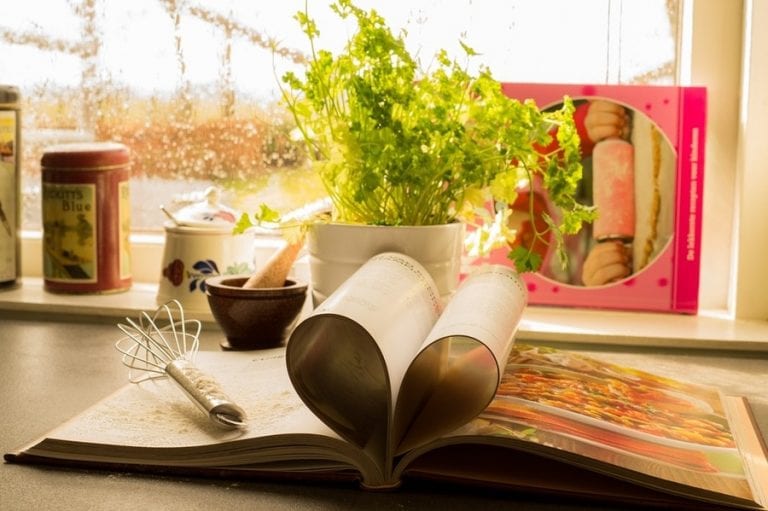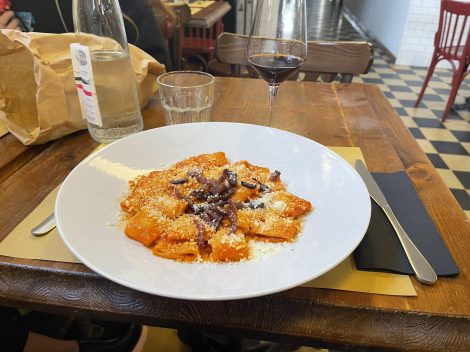One of the pleasures of summer is relaxing with a book in our favorite spot. It doesn’t matter if that spot is a beach, a meadow in the countryside, or our own apartment. As we may have more time on our hands, we might feel inclined to read volumes that are more informative than a novel or a self-help book that we are more willing to read when schedules are full. There is a growing number of smart, interesting books about food, looking at its culture, history, and politics. Do not get scared: they may hold surprises!
Edible Flowers: A Global History
It is already old news: flowers have been used by all sorts of chefs, from fine dining to trattorias, to make food look better. What felt like a refreshing novelty a few years ago is now less exciting. But what if you learned that edible flowers have been used for centuries, even if their flavors are fleeting and at times hardy perceptible? Kirker and Newman take us on a journey to the past, going back to the Egyptians, the Greeks and the Romans, and around the world, to discover intriguing traditions and symbols. Although the book is mostly historical, the final chapters bring edible flowers closer to us, starting from the necessary precautions when eating them. The authors also offer a few recipes and a menu for a flower-based dinner.
Edible Flowers: A Global History, Constance L. Kirker and Mary Newman - Reaktion Book, 2016 - 164 pages
Edna Lewis: At the Table with an American Original
One of the aspects of the cuisine of the United States that is often ignored abroad is its variety across regions and cities, due to the different waves of populations that settled in the country since its founding. Such diversity is deeply rooted in the food customs, even at a time when corporate business, industrialization, and globalization appear dominant. To understand the foodways and, in particular, the African-American customs that developed in the South, there is no better place to start than the life and work of Edna Lewis, one of the most famous African-American chefs and cookbook writers. Long before anybody talked about farm-to-fork, she understood how important the connection is between what we eat and food production. Her legacy is celebrated in a collection of essays written by notable experts, food writers, and chefs, - from John T. Edge to Alice Waters - who knew her or were influenced by her approach to food and cooking. After an introductory essay by editor Sara Franklin, each piece looks at different aspects of Edna Lewis’s career and cultural relevance, at times in very personal and endearing tones. A great introduction to Southern cuisine for those who are curious about this often misunderstood culinary tradition.
Edna Lewis: At the Table with an American Original, Sara B. Franklin - The University of North Carolina Press, 2018 - 260 pages
Garden Variety: The American Tomato from Corporate to Heirloom
The tomato is undoubtedly one of the most widespread vegetables (well, technically a fruit) in the world. From its origin in central America, it has been carried everywhere, adapting to different locations and environments and generating countless varieties that emerged in places as diverse as Mexico, Italy, and India. The tomato is also one of the crops that have most contributed to the industrialization of agriculture. Following in the steps of Andy Smith’s historical examination in The Tomato in America: Early History, Culture, and Cookery and Barry Estabook’s political expose in Tomatoland: How Modern Industrial Agriculture Destroyed Our Most Alluring Fruit, historian John Hoenig examines the transformation of the tomato. From a mostly localized, highly seasonal, and very diverse vegetable it turned into an often tasteless corporate product through genetic selection and the organization of its manufacturing, distributions, and sales. However, through his explorations of cookbooks, seeds catalogues, menus and news, the author also points to how a new interest for heirloom tomatoes has emerged. After all, there is still hope…
Garden Variety: The American Tomato from Corporate to Heirloom, John Hoenig - Columbia University Press, 2018 - 272 pages
Kitchens, Cooking, and Eating in Medieval Italy
We have relatively little information about food and cooking before the Renaissance, and what we know is mostly limited to courts and the upper classes. Part of a series focusing on historical kitchens and curated by food historian Ken Albala, this book is a precise but pleasurable reconstruction of the culinary life in Italy in the Middle Ages.
Through the examination of cookbooks and images, but also stories and poems, letters, and inventories, art historian Katherine McIver help us imagine what kitchens were like at the time, considering the limited technology and equipment available, as well as the great ingenuity of cooks. The author explains to us what the hierarchy and the organization in the kitchen were and what role women played. Of course, she also looks at the ingredients, the dishes, and how they were served during meals and special occasions.
Kitchens, Cooking, and Eating in Medieval Italy, Katherine A. McIver - Rowman & Littlefield, 2017 - 126 pages
Academic books
For those with more academic interests and want to look at food in critical ways this summer, two edited collections examine different aspect of how we relate to eating. Food, Power, and Agency, edited by Jürgen Martschukat and Bryant Simon (Bloomsbury, 2017, 204 pages) focuses on the constant power negotiations that take place among different actors in the food systems, and how they reveal struggles to achieve control and authority in aspects as diverse as the presence of immigrant in restaurants; the tensions between chefs, waiters, and food writers; and dieting. Food & Place: A Critical Exploration, edited by Pascale Joassart-Marcelli & Fernando J. Bosco (Rowman & Littlefield, 2018, 352 pages) analyzes the connections between food and the places where it is produced, distributed, and consumed. The essays show how contexts and specific geographical situations have a profound impact in the choices made by producers, shoppers, and eaters, how distance and scale counts, and how globalization connects (and at times clashes) with local realities.
by Fabio Parasecoli












